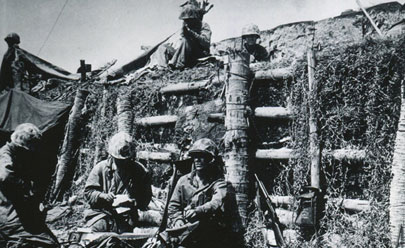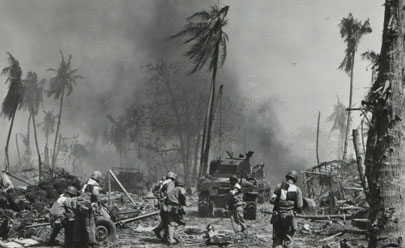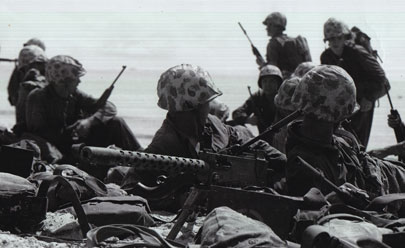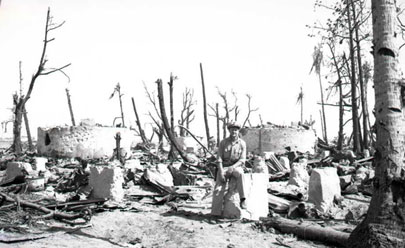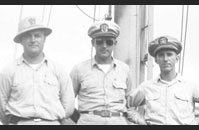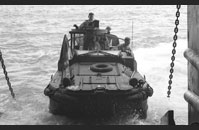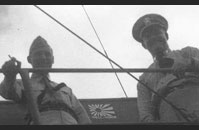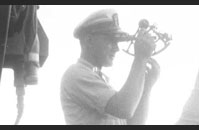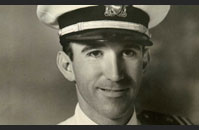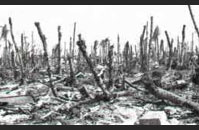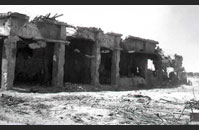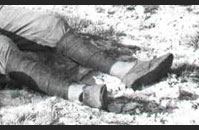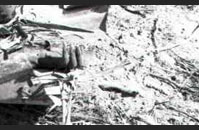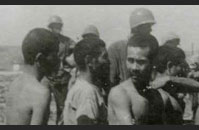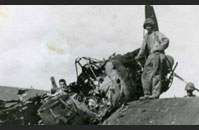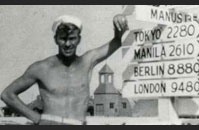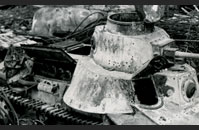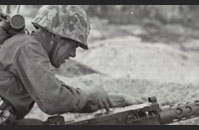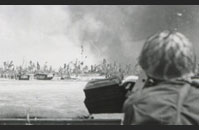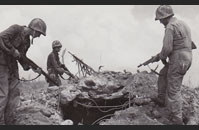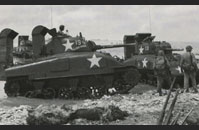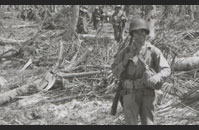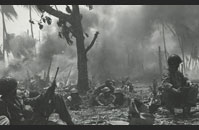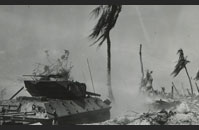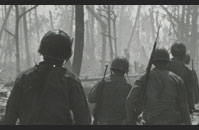FOCUS ON: D-DAY KWAJALEIN:
Kwajalein, an atoll strategically located in the center of the Marshall Islands, was one of the primary objectives of the Pacific war. Capturing the atoll’s three major islands—Kwajalein, Roi, and Namur—was the next step in the island-hop to Japan following harrowing American losses at Tarawa in November 1943. Kwajalein, a League of Nations mandate, was a well-defended Japanese territory surrounded by airfields. Coming off the heavy losses at Tarawa, the US opted to employ both Navy ships and B-24 Liberators in a 15,000-ton pre-landing bombardment, one of the most concentrated bombings to take place in the Pacific. The bombardment was so complete that no demolition work by combat engineers was necessary. The Navy’s ships also provided crucial fire support during the invasion itself on 31 January 1944; the 4th Marine Division landed at Roi-Namur, while the Army’s 7th Infantry Division landed at Kwajalein.
Japanese concrete blockhouses inland, some partially intact, were the biggest challenges, but were overcome with explosives and artillery. Because of the heavy bombardment’s decimation of all vegetation, the fighting resembled street fighting more than jungle combat. Debris heaps and shell craters were the only cover afforded the individual groups of infantrymen, conquering one pillbox and blockhouse at a time .
Operations on Kwajalein went smoothly. The island was secured in a mere four days with relatively light casualties. The Marines on Roi-Namur met more resistance, but Kwajalein Atoll was in American hands by 8 February 1944. Kwajalein was the first pre-war Japanese territory to fall to the Allies and was an important step in penetrating the outer-ring of Japan’s defenses. From the action on Kwajalein, Roi, and Namur, the Japanese suffered nearly eight-thousand killed while American deaths were below 400.
Photographs from the service of Lt. Cmdr. John D. Schneidau, LST-31:
As commanding officer aboard LST-31, Lt. Cmdr. John D. Schneidau, Jr., a native of New Orleans, participated in several landings in the Pacific. LST-31 left Pearl Harbor on 19 January 1944 for Kwajalein Atoll, anchoring offshore on 1 February to unload her cargo in support of operations. LST-31 was part of Task Force 52, the Southern Attack Force’s Advance Transport Unit responsible for the main island of Kwajalein. In addition to basic supplies, fuel, and ammunition, each LST (Landing Ship, Tank) carried seventeen LVTs (Landing Vehicle Tracked) which would then carry fifteen men each to the shore. In addition to the campaign for Kwajalein, LST-31 was active in the battles for Saipan, Tinian, and Okinawa.
Schneidau regularly corresponded with his wife throughout the war, describing various battles in great detail. One of his letters was accompanied by a note to the censor explaining, “The enclosed letter contains a fairly detailed description of an action in which this vessel took place. However, I would like to point out that nowhere in the letter is the name of the ship mentioned, nor is the location or name of any place given. It could apply to any ship in the Pacific and includes nothing that could benefit or inform the enemy in any way should it fall into their hands.” This particular letter centers on the D-Day landing at Kwajalein. Because the letter contains descriptions of violent battle scenes, some may find the material disturbing.
Download a copy of Lt. Cmdr. Schneidau's letter.
Lt. Cmdr. Schneidau was also an avid photographer and kept several cameras with him during his service. He took many photographs of Kwajalein and other island invasions, plus photographs of life onboard an LST. The viewer is advised that some of the following wartime images are disturbingly graphic.
Images from the Collection of the National WWII Museum:
Images from The National Archives:

